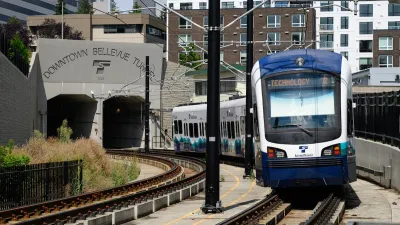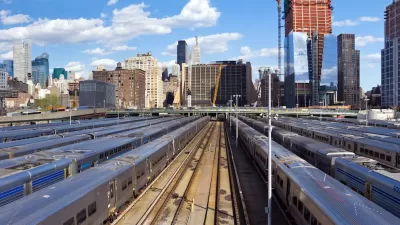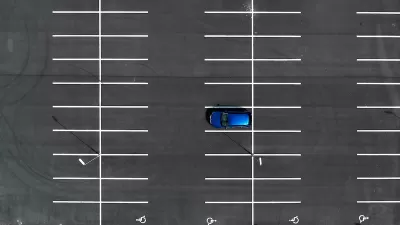Oregon's Metro has developed a measure for transit-orientation, which uses 3 dimensions to convey the relative diversity in form and activity across the Portland region.
From Metro's press release:
"Research shows that a few key measures can strongly predict the readiness of an area to support walkable, mixed-use development and help residents live a lifestyle with less reliance on a personal automobile. Metro's Transit-Oriented Development Program's new transit orientation measure is a composite of these important elements.
The five P's of transit-oriented development
Traditionally, true transit-oriented development has been said to possess three D's – density (residential and/or employment), diversity (e.g. mix of uses, ages, income groups) and design (pedestrian scale and orientation). For the purpose of better capturing "urban character" in a composite measure, a more holistic view of the transit friendliness of station areas and corridors is proposed."
Thanks to Christopher Yake
FULL STORY: TOD in 3D: How transit oriented is the Portland, OR region?

Maui's Vacation Rental Debate Turns Ugly
Verbal attacks, misinformation campaigns and fistfights plague a high-stakes debate to convert thousands of vacation rentals into long-term housing.

Planetizen Federal Action Tracker
A weekly monitor of how Trump’s orders and actions are impacting planners and planning in America.

San Francisco Suspends Traffic Calming Amidst Record Deaths
Citing “a challenging fiscal landscape,” the city will cease the program on the heels of 42 traffic deaths, including 24 pedestrians.

Half of Post-Fire Altadena Home Sales Were to Corporations
Large investors are quietly buying up dozens of properties in Altadena, California, where a devastating wildfire destroyed more than 6,000 homes in January.

Opinion: What San Francisco’s Proposed ‘Family Zoning’ Could Really Mean
Mayor Lurie is using ‘family zoning’ to encourage denser development and upzoning — but could the concept actually foster community and more human-scale public spaces?

Jacksonville Launches First Autonomous Transit Shuttle in US
A fleet of 14 fully autonomous vehicles will serve a 3.5-mile downtown Jacksonville route with 12 stops.
Urban Design for Planners 1: Software Tools
This six-course series explores essential urban design concepts using open source software and equips planners with the tools they need to participate fully in the urban design process.
Planning for Universal Design
Learn the tools for implementing Universal Design in planning regulations.
Gallatin County Department of Planning & Community Development
Heyer Gruel & Associates PA
JM Goldson LLC
City of Camden Redevelopment Agency
City of Astoria
Transportation Research & Education Center (TREC) at Portland State University
Jefferson Parish Government
Camden Redevelopment Agency
City of Claremont





























